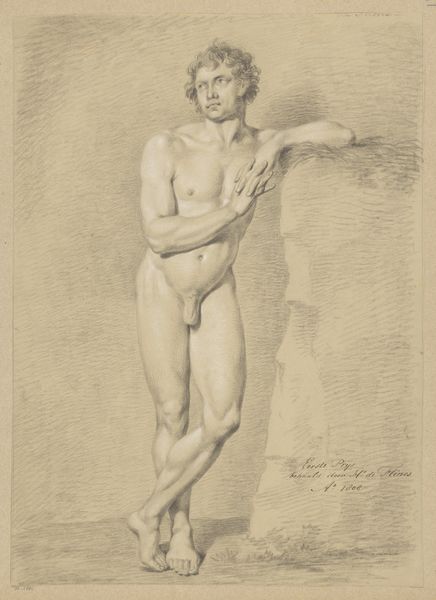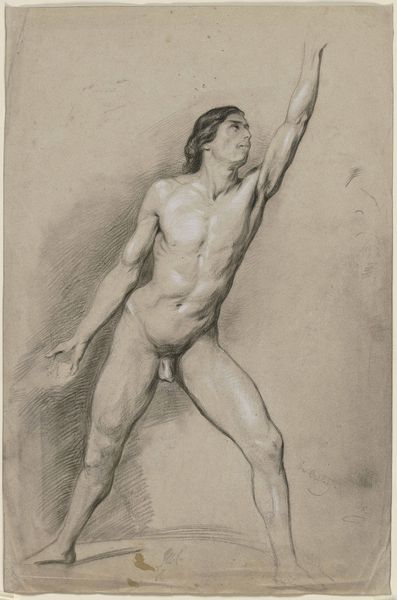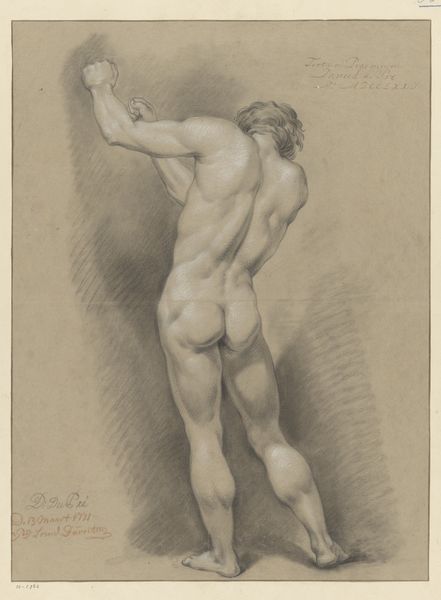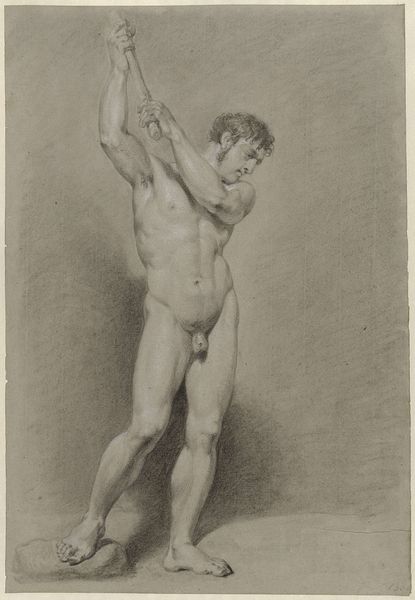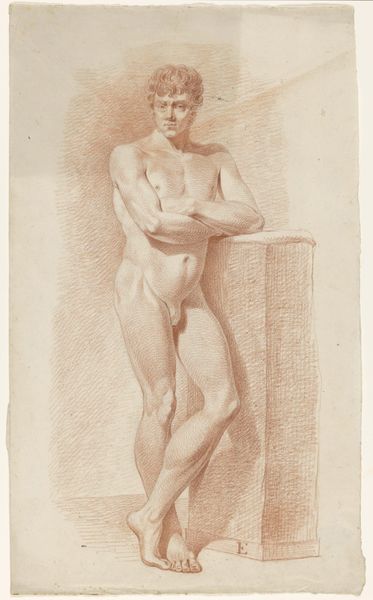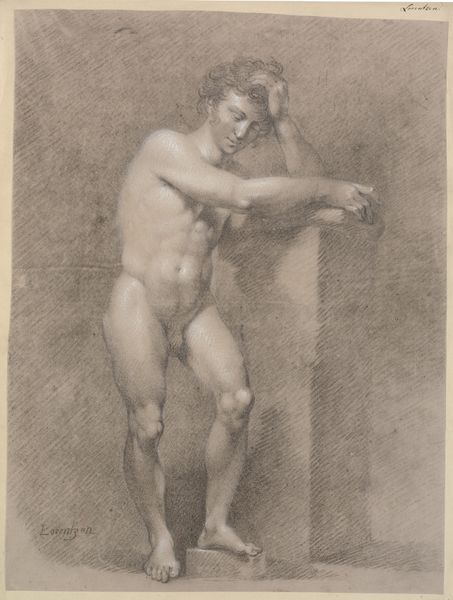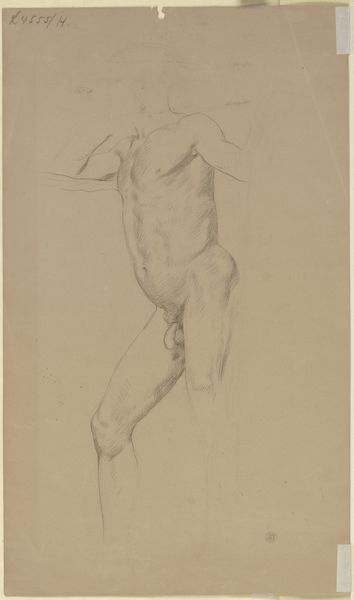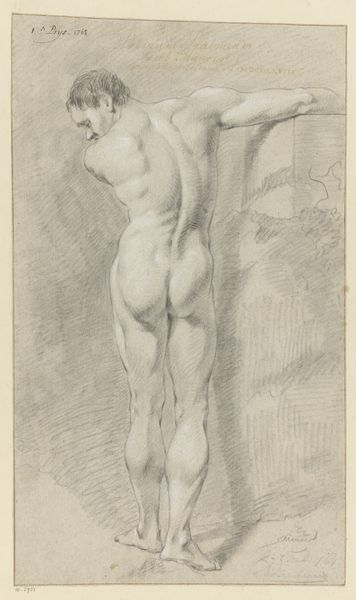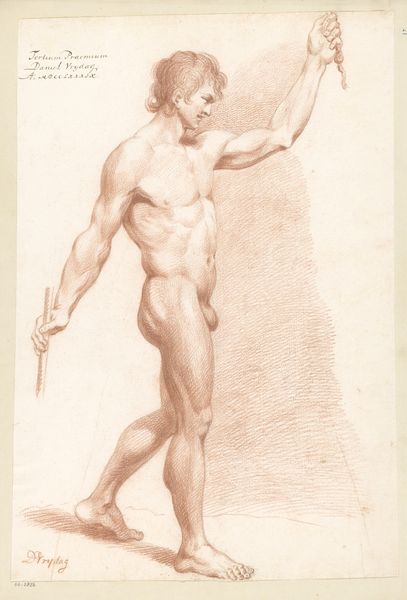
drawing, charcoal
#
drawing
#
charcoal drawing
#
charcoal art
#
charcoal
#
academic-art
#
nude
#
realism
Dimensions: height 580 mm, width 402 mm
Copyright: Rijks Museum: Open Domain
Curator: What strikes me first is the pose; the man's upward gaze and extended arm feel almost like a classical orator appealing to a higher power. Editor: Yes, it has an immediate, theatrical feel. The dynamism of the upward reach contrasted with the grounded stability of the figure resting on the block, there is almost a sense of tension contained in a single instant. I also can’t help but think of its possible ties to political symbolism and idealized form in the 19th century. Curator: This drawing, "Standing Male Nude, Seen From the Front", rendered in charcoal, was likely produced by A. Waterloo, sometime between 1831 and 1838. What can we learn of its process? Editor: Well, the medium certainly contributes to the mood. Charcoal allows for subtle gradations of light and shadow, almost smoky softness, that tempers what could be a stark, neoclassical presentation of masculinity. The line work itself, the clear anatomical observations balanced with blurred lines, point to an academic, deliberate process of recording, of perfecting through observation. Curator: Indeed. Anatomical studies like these were crucial to the academic system. Students diligently copied casts and live models, honing their skills. The focus on idealized form aligns with the broader artistic and societal emphasis on the male nude as a symbol of virtue and reason in the era of revolutions. Editor: I see, so the very act of creating such a drawing had political undertones, contributing to the canon of power representation. The drawing not only showcases a skill but serves as a statement reinforcing prevailing ideologies of beauty and authority. The tension between artistic observation and the politics it reflects fascinates me. Curator: Agreed. It reminds us that even seemingly objective studies of form are intertwined with cultural and historical narratives. We, as viewers, cannot remove ourselves from the history, especially given this artwork is now exhibited within a specific time and space that changes its own history. Editor: And to engage with form is to participate in those narratives. Seeing art and decoding both structure and socio-political role gives the experience additional meaning.
Comments
No comments
Be the first to comment and join the conversation on the ultimate creative platform.

